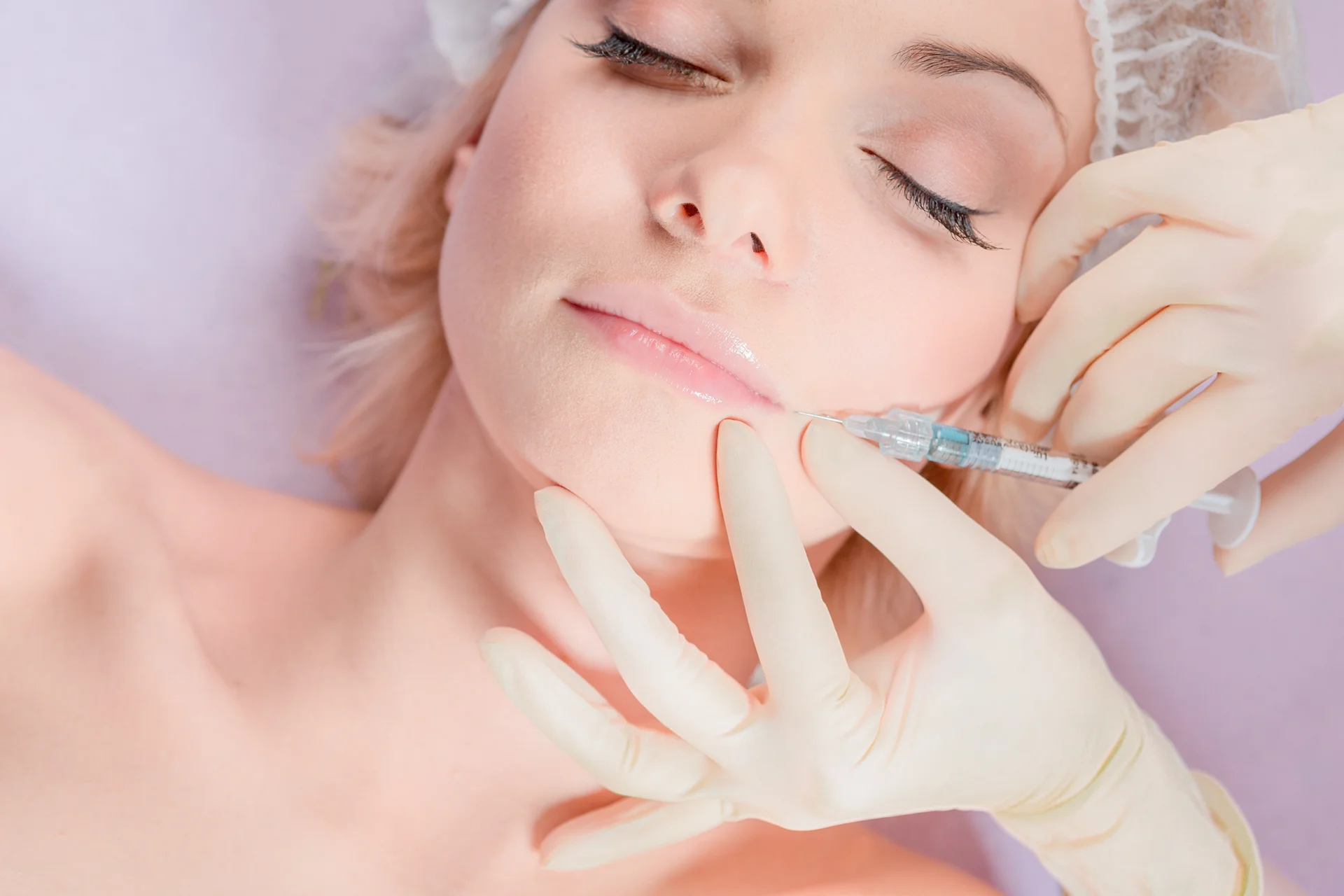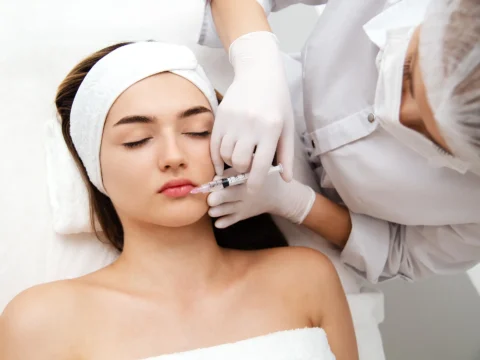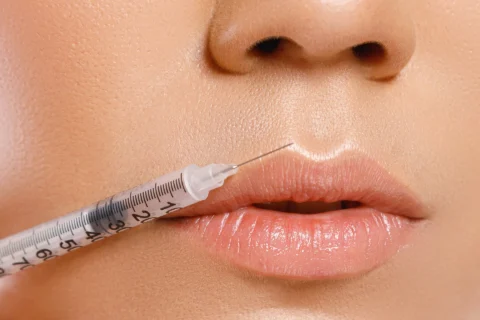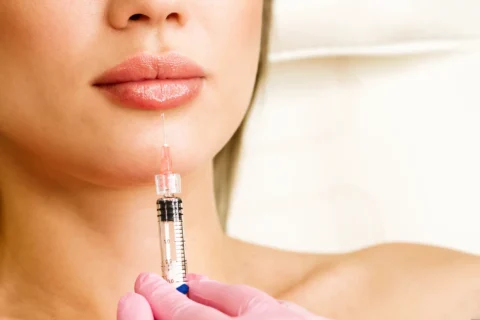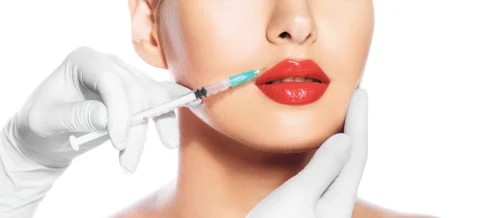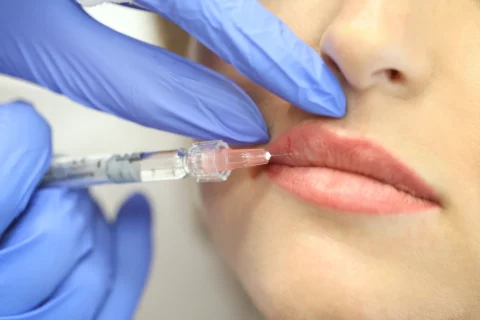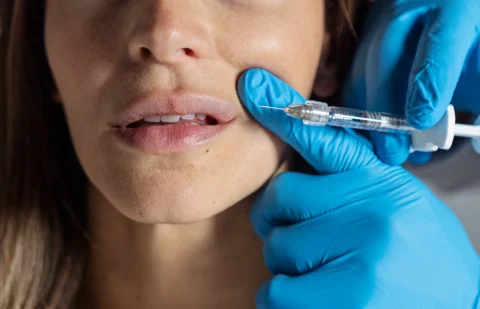How to Spot and Treat Them
A perfect pout shouldn’t come with pain. But if your newly plumped lips start feeling swollen, warm, or tender, an infection may be brewing beneath the surface. Lip filler infections are rare yet serious. Don’t ignore the subtle early signs – a bit of extra puffiness or a stubborn redness.
Catching an infection early makes treatment easier. Armed with the right information, you can spot an infection before it escalates and get back to flaunting your fabulous, full lips. This guide covers everything from subtle symptoms to seek help for, to at-home remedies that provide relief while awaiting your doctor’s diagnosis. With the right care, your dream lips will be infection-free.
What are the signs of a lip filler infection?
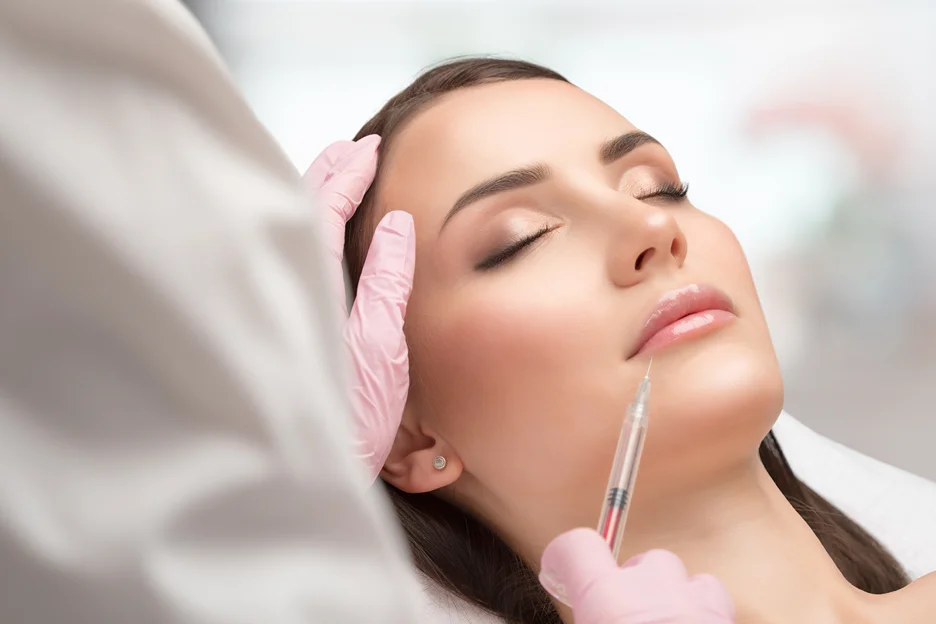
If your recently plump pout starts feeling painful, swollen or warm, it could signal an infection brewing under the surface. Common signs to watch out for in the first week after treatment include redness, pain, warmth or excessive swelling at the injection site. This signals your body fighting an invading microbe. Persistent puffiness long after initial swelling subsides can also indicate infection, as infections can cause chronic inflammation. Other symptoms like fever, pus, discharge or streaks under the skin point to a spreading infection.
See your doctor immediately if you experience any of these symptoms after a lip filler treatment. Early intervention is key to treating infections effectively and avoiding complications.
Lip filler infections: An Overview
Lip filler injections carry a small risk of infection if proper precautions are not taken. The mouth contains a diverse community of microbes, so any disruption to the integrity of the lips can potentially introduce bacteria, viruses, or other pathogens that could lead to infection.
What Causes It?
Several factors may contribute to lip filler infections. Poor sanitization of the equipment, needles, or injection sites could inadvertently transfer microbes into the lips during the procedure. If the patient has any pre-existing illnesses like cold sores or other skin infections, the introduction of filler material can allow these infections to spread more extensively.
Improper injection technique that drives filler material and microbes deeper into the dermis raises the infection risk as well. Even after the procedure, contamination can occur if the patient undergoes dental work, smokes, or touches their lips frequently with unwashed hands.
All these factors can seed bacteria or viruses into the vulnerable filler injection sites. Therefore, meticulous attention to sterility before, during, and after the lip filler procedure is paramount to avoid potential infections.
How Are Lip Filler Infections Treated?
Lip filler infections are rare, but if they occur, they should be treated promptly to avoid complications. The treatment of lip filler infections depends on the severity of the infection. Here are some ways to treat lip filler infections:
| Treatment | Details |
| Drainage and antibiotics | The first-line therapy for lip filler infections is drainage and antibiotics. Antibiotics are given immediately if an infection is suspected. |
| Intralesional corticosteroids, allopurinol, and 5-fluorouracil | Intralesional corticosteroids are steroid medications that are injected directly into the infected area to reduce inflammation and suppress the immune system’s response to the infection. Allopurinol is a medication that is used to reduce inflammation and pain in the affected area by reducing the production of uric acid in the body. 5-fluorouracil is a chemotherapy drug that is used as an antibiotic agent to stop bacterial infections and inhibit the action of microorganisms and other substances that lead to delayed nodules. |
| Early antibiotics | Early antibiotics such as Cephalexin 500mg (oral, 4x a day) for 6 weeks are recommended for treating HA dermal filler infections. Clindamycin 150mg (oral, 4x a day) can be added if the Cephalexin doesn’t cause improvement. Injection into the affected area with Gentamicin (80 mg/2ml) is also recommended. |
| IV antibiotics | In severe cases, IV antibiotics may be necessary depending on the presence of systemic effects and severity of the infection. |
| Removal of product | In some cases, the filler may need to be removed to clear the pores of debris so they can heal. This procedure will be performed in the doctor’s office. |
How To Avoid Lip Filler Infections
After getting lip filler injections, you play an important role in preventing infections. In the first 2-3 days following your procedure, you should avoid smoking, drinking alcohol, or engaging in strenuous activity. These actions can irritate the injection sites, cause bleeding or swelling, and potentially drive bacteria into the fragile tissue. It’s best to let your lips fully heal initially without disruptions.
You should also avoid touching, poking, or stretching your lips while they heal. Your lips will be sensitive and delicate after injections. Poking or handling the area with unclean hands can introduce bacteria and cause an infection in the injection sites. Let your lips rest without disturbance.
Using a gentle antimicrobial mouthwash twice daily helps keep bacteria levels low in your oral cavity. A study shows Listerine to completely kill a wide variety of oral microbes, including bacteria and fungi, within 10-30 seconds of exposure.
With fewer bacteria around, there is less chance of them entering the injection sites and causing infection. Swish the mouthwash gently without pursing or stretching your lips.
Applying ice packs as needed will minimize swelling after injections. Excess swelling hampers healing and provides pockets where bacteria can grow. Reducing swelling helps your lips heal faster and decreases infection risks. Just be gentle when icing so you don’t disturb the injection sites.
Additionally, keep your injection sites clean and avoid applying makeup for 24 hours after your procedure. Makeup brushes and tools can harbor bacteria. Skipping makeup for a day avoids contaminating healing skin. Follow your doctor’s cleansing instructions to keep the area around injections clean.
Can Minor Lip Filler Infections be Treated at Home?
Minor infections from lip filler injections can sometimes be treated at home while waiting to see a doctor, but home remedies should never replace proper medical care and antibiotics.
For mild cases, you can try applying apple cider vinegar, which contains antibacterial acetic acid, to infected areas 2-3 times daily with a cotton ball to help reduce microbes. Two test tube studies have revealed that apple cider vinegar is effective at killing Escherichia coli and Staphylococcus aureus (bacteria responsible for staph infections), and Enterococcus faecalis (bacteria occurring naturally in the bowel and gut of healthy humans).
Tea tree oil is also a natural antiseptic. Gently dab the cotton swab soaked in water with a few drops of tea tree oil to the infected area 2-3 times a day.
Additionally, chamomile tea bags may help soothe inflammation when used as a warm compress for 10-15 minutes at a time. However, it’s important to see your doctor for an accurate diagnosis and prescription antibiotics to fully treat any infections resulting from lip injections.
While home treatments may provide some relief, infections require professional medical attention.
How to Reduce Swelling After Lip Fillers
It’s normal for lips to swell after dermal filler injections. But excess swelling can be minimized by:
- Applying cold packs wrapped in cloth to lips for up to 10 minutes at a time, a few times a day. This reduces inflammation.
- Taking OTC antihistamines as they prevent excess fluid buildup and inflammation.
- Sticking to a soft, cool diet like yogurt, pudding or smoothies to avoid aggravating tender lips.
- Staying hydrated and using lip balms or petroleum jelly to prevent chafing and irritation.
- Avoiding extreme heat or sun exposure which can worsen swelling. Stay in the shade outdoors.
- Refraining from smoking, drinking alcohol or strenuous activity for 2-3 days, as these make swelling worse.
- Sleeping elevated on a few pillows to minimize fluid buildup in lips overnight.
Swelling peaks at 24-48 hours, then gradually subsides over 7-14 days. Call your doctor if swelling persists longer.
Are Lip Fillers Worth the Infection Risk?
For most patients, the risk of complications like infections from lip fillers is very low when proper protocols are followed. However, some key benefits to balance out the risks include:
- Lip fillers can provide immediate, dramatic improvement in lip size and shape with minimal downtime, unlike surgical options which take months to see results.
- The effects from leading dermal fillers last 6-12 months for semi-permanent enhancement. This avoids constant topping up.
- When properly injected, risks like lumps or asymmetry are reduced with soft, natural looking results.
- Reversing or adjusting results is easier than with permanent surgical options, as fillers can be dissolved if needed.
- Multiple syringes can be used in one session for a more prominent result compared to small incremental changes with surgery.
- The cost per treatment is comparatively lower than options like implants or fat transfers, providing value for money.
While no procedure is risk-free, modern dermal fillers have good safety profiles when used by properly trained professionals. Weigh the benefits and risks carefully before choosing to enhance your lips.
Trust Ethos Spa for Your Lip Filler Needs
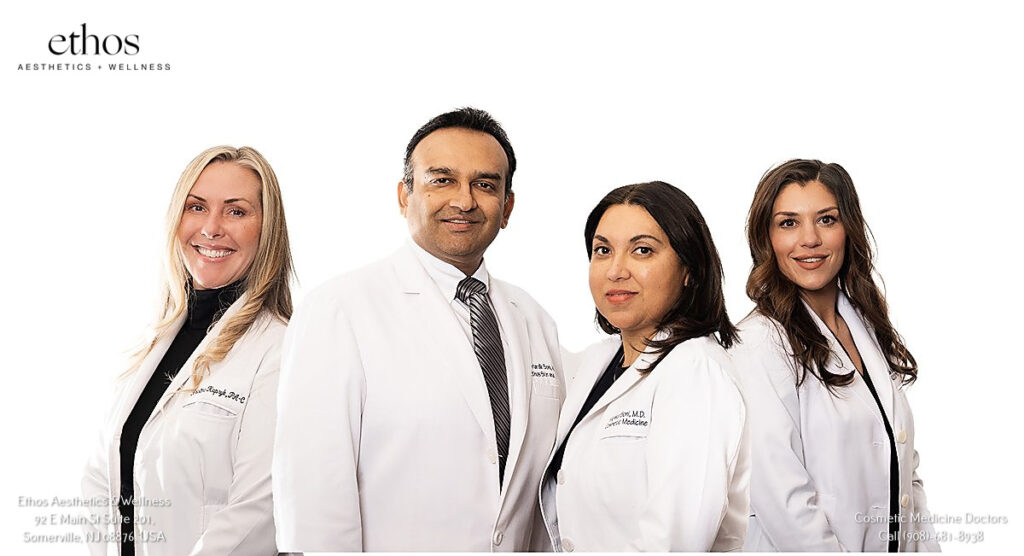
Full lips can make your features pop beautifully. But improperly done fillers put you at risk of complications like infection. Choose a licensed, experienced provider like Dr. Soni and the team of Ethos Aesthetics + Wellness to ensure the safest, most stunning enhancement possible.
Allow our aesthetic experts to assess your needs and customize a treatment plan to achieve your dream lips in the healthiest way possible. Contact us today to schedule your lip filler consultation!
FAQs
How do I know if my lip filler is infected?
Signs of an infected lip filler include pain, tenderness, swelling, redness, warmth or pus at the injection site within the first week after the procedure. Any of these symptoms indicate the need to see a doctor immediately for evaluation and treatment with antibiotics. Don’t wait as infections can worsen quickly.
Can lip filler infections spread?
Yes, bacterial infections from lip fillers can potentially spread if not treated promptly and properly contained. Any signs of infection should be evaluated by a doctor immediately and antibiotics started to prevent the infection from spreading to other facial areas which could cause serious complications.
What antibiotics are used for lip filler infections?
The most common antibiotics used to treat infections from lip fillers are clarithromycin, ciprofloxacin, moxifloxacin, and tetracyclines. These are often prescribed in combination and for 2-6 weeks to fully clear the infection. The specific antibiotic depends on the type and severity of the infection.
Why are DIY lip fillers dangerous?
DIY lip fillers are extremely dangerous due to the high risk of infection, nerve damage, blindness, uneven results and allergic reactions from lack of proper sterile techniques, tools and injecting expertise. Only get lip fillers done by an experienced, licensed provider.
What is the recovery process for lip augmentation?
After lip augmentation, swelling peaks at 2 days and then gradually subsides over 2 weeks. Final results settle around 4-6 weeks. Most normal activities can be resumed immediately except sun exposure which should be avoided until swelling goes down. Icing helps reduce swelling.

